Some of the sails that have graced our loft floors would make your jaw drop. The worst part is that most of the carnage could have been prevented by basic inspections and regular maintenance. Read on as one of our service technicians shares the two main reasons for sail damage and the principal areas to monitor to keep your sail from joining the cast of the loft floor horror show!
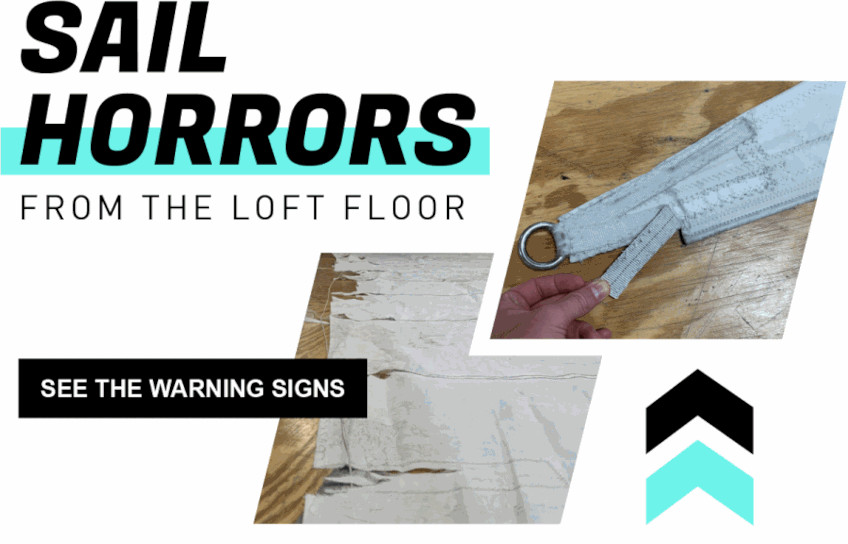
Ultimately, the two largest factors that will impact the longevity of your sail are overall time used and how often the sail sees the sun. The thread and the body of the sail are the easiest places to monitor if your sail is starting to break down. The best way to ensure the longest lifespan for your sail is to have it inspected annually by your local loft–service pros are trained to spot the warning signs and less obvious concerns to help you keep ahead of wear and costly repairs!
The Sun
Your sail should always be covered when not in use. Covers are sometimes part of your sail, such as the sacrificial UV cover along the leech and foot of your roller-furling headsail. When we hear from a customer that their sail is “coming unstitched,” it is usually the UV cover stitching that has begun to fail. This is a welcome relief, but we still need to address the issue in a timely fashion since the UV cover fabric can begin to tear once it is loose or flapping. Most sailors are familiar with the now-ubiquitous roller-furling headsail with a sacrificial UV cover, but these covers can also be on the clew of an in-mast furling mainsail or the head of an in-boom furling mainsail. Be sure to pay attention to these areas and make sure that the sail is fully furled to leave only the UV-protected area exposed.
Along with sacrificial UV covers, the corners of your sails tend to be exposed, whether from reflected sunlight coming in under a mainsail cover, sunlight entering through the gap in an in-mast furling mast, or just the very head of a headsail where the shape of the furl does not lend itself to staying protected from the sun. At the corners of a sail, you will see that patching, quilting, and webbings provide the strength necessary for the sail to perform. Any stitching failure in these areas needs to be addressed immediately as the road to catastrophic failure isn’t far from there. Check your stitching for UV damage with the pluck test (shown above). Along with restitching these areas, our service professionals can also recommend whether webbings or other parts need to be replaced due to age or damage. Finally, if stitching damage is showing up in an area where there may be a chafe or striking factor (the clew of a genoa, for example), the rig should be examined to see if the offending bit or bob can be taped or otherwise protected to prevent further damage to the sail.
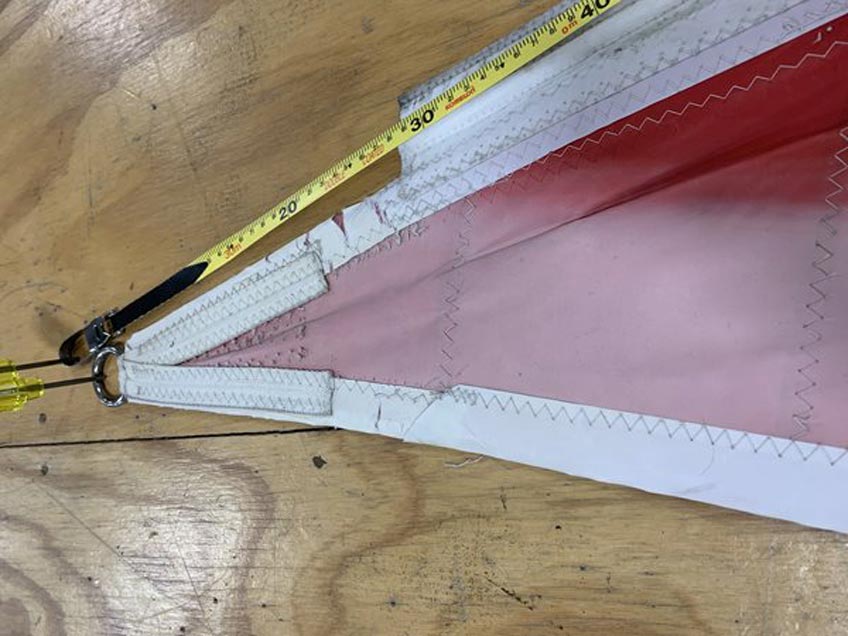
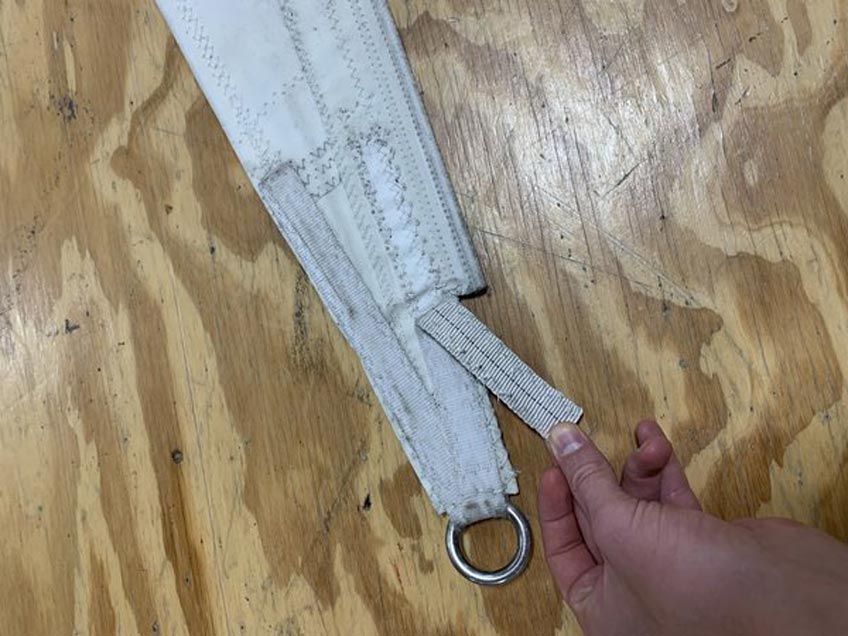
Time Spent Sailing
This is the fun one, a badge of honor like those well-worn Topsiders or your Quantum hat that has seen better days before the first regatta or cruise of the season! As fun as it is to use your sails, use also causes stretching, broken stitching, and exposes previously unknown chafe locations. Photos of your sail when new (or new to you) can be useful to help see deterioration both in the shape as well as the color of the fabric. When woven sailcloth has seen enough sun to begin to weaken, the cloth will begin to take on a yellow or brown hue. If you unfurl or hoist your sails and notice a distinct line of discoloration that is not located on a sacrificial UV cover (or easily explained as dirt or residue from dried water in the sail), then it’s past time to see your local Quantum service technician. We can install UV-stabilized reinforcing fabric over the area, scoop out some of the leech of the sail if it is too damaged to salvage, or address the issue in other ways. Steps taken to mitigate the damage early will result in a longer lifespan of the sail.
Here is an example progression of woven sails from new, to sun damaged, to catastrophic failure.
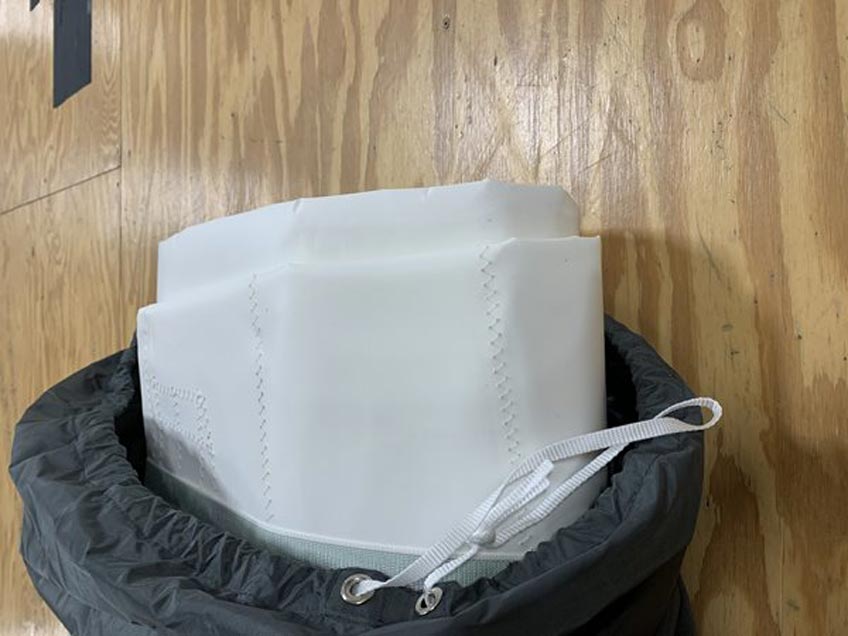
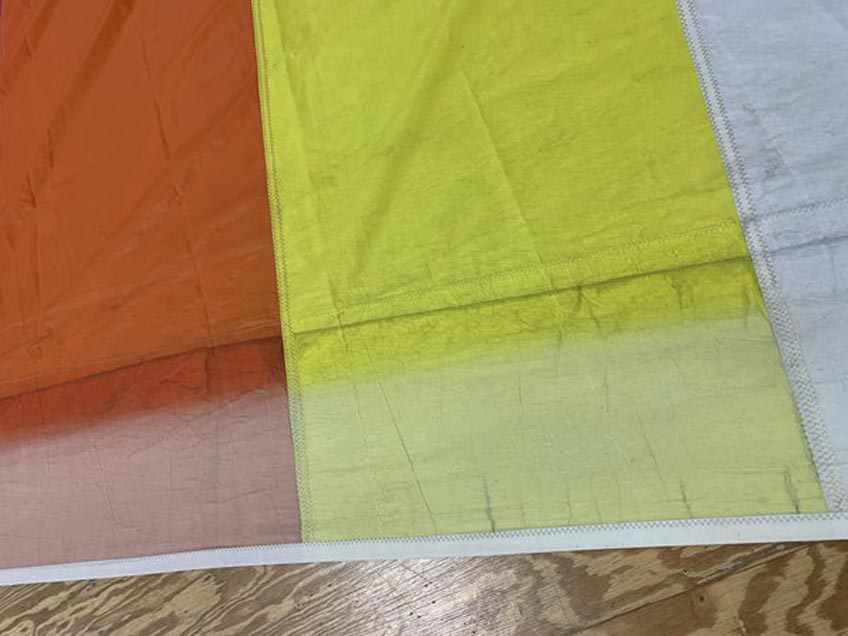
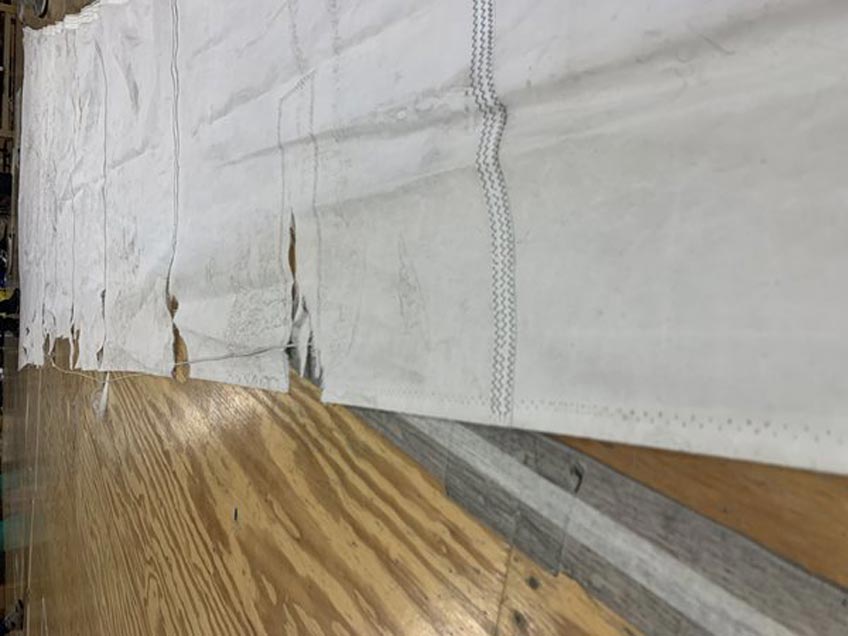
Come See Us
If you start to notice any of the signs described above or anything else that looks like the deterioration shown in the photos, then stop by your local Quantum Sails service loft or give us a call so that we can discuss the issue and a plan for removing the sails from the boat and fitting in a visit to the loft. Missing a few sailing days due to repair is a small price to pay for avoiding catastrophic failure of your sail!
We want to keep you on the water, so here are a few tips to help you maintain your sails.
Areas for Inspection:
- The strip of fabric along the leech that can be exposed to the sun in an in-mast furling system or in an in-boom furling system if the cover is not kept on regularly.
- The edge of any sacrificial UV cover where it transitions to only sailcloth. If the sail is furled poorly, over time this can create a strip of UV damage both on headsails as well as in-mast and in-boom mainsails that can be easily neglected if visibility of the furled sail from the cockpit is limited.
- Webbings located on any corners of the sail. These are strong, and we want to make sure that strength stays stitched onto the sail where it needs to be.
- The exposed portion of any UV cover. Don’t panic when the stitching begins to fail, just take it as a reminder to schedule a service appointment. In warm latitudes, you may need service every two years; in cooler climates with shorter sailing seasons, it might be four or five years.
Pro Tip: We know that the best option is sometimes the one available in your current location and situation, and we love to see the excellent DIY repairs that are done either by choice or in a pinch. But keep in mind that service lofts use industrial machines to sew through the corners of these sails with thread that is much larger and stronger than home sewing machines can handle, and know that home sewing thread can deteriorate in a matter of weeks in the elements. So while we commend you on the repair that got you back from your gunkholing adventure, you may still need to see the inside of a loft before you can depend on more years with your sail.
Pro Tip: Many times, even if the sail material is not tearing and degraded, the shape of your sail can be totally blown out. All sails stretch over time and therefore, the designed sail shape can only hold for so long. Normally, the draft in the sail moves aft towards the leech as the sail stretches and gets deeper, making the sail harder to de-power. When the sails are harder to depower, the boat heels more and there is much more resistance on the wheel or tiller. Stretched out sails can make your time on the water much more challenging than necessary. If you're having trouble controlling your sails, call one of our consultants. They can help assess the sail shape and recommend next steps, such as a re-cut.
Stop by and see us soon. Your sails will thank you!